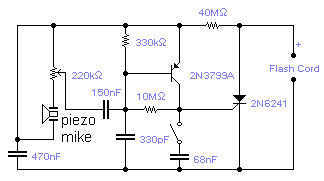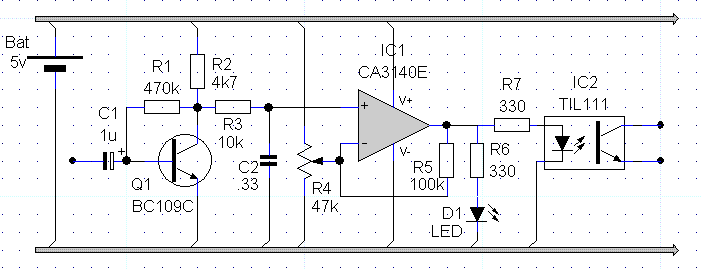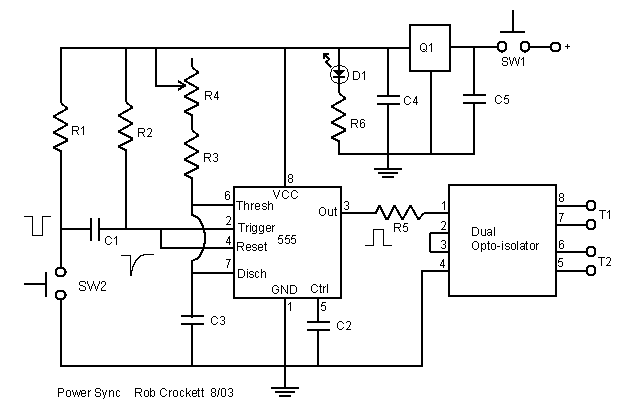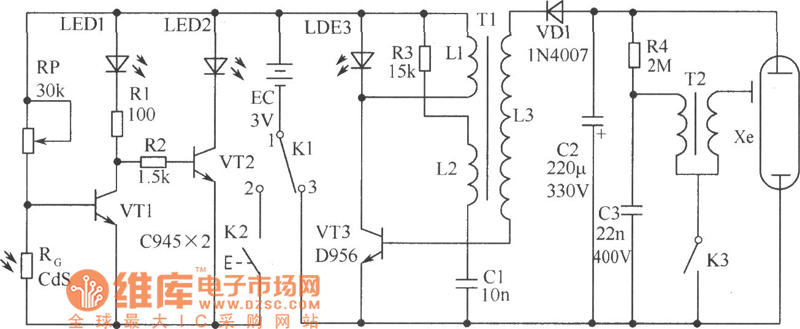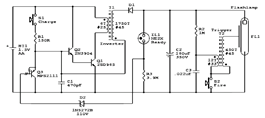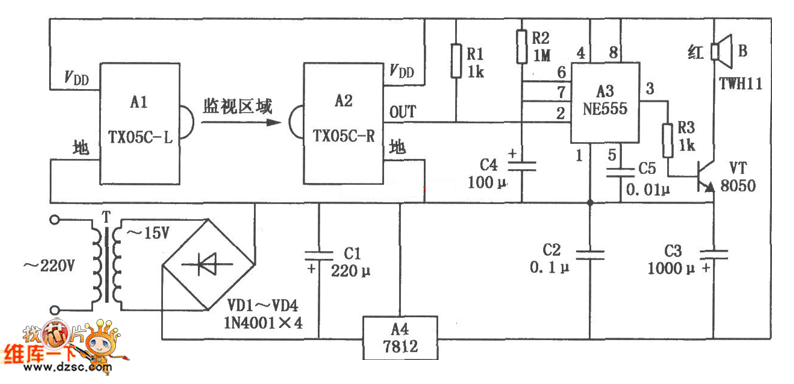
1980 RCA TC-2811 First Generation CCD Surveillance Camera
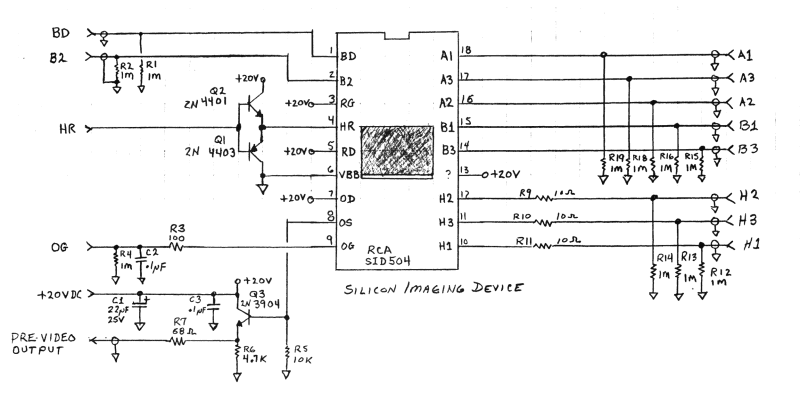
RCA developed some of the first commercially available CCD (Charge-Coupled Device) chips. A CCD is a silicon-based solid-state imaging device that replaces the older vidicon tubes. CCDs consist of a two-dimensional array of photodetectors linked to an array of shift registers. The operational cycle of a CCD involves several steps: first, the device is reset or cleared. After this, a period known as the integration time is allowed to pass, during which the device accumulates charge on the photo sites. These charges are then transferred to a second section of the chip known as the storage registers. The photo sites are reset again, preparing them for the next frame cycle. The charges held in the storage array, which function as an analog memory, are subsequently fed into a one-dimensional shift register for line-by-line readout. This process continues until all charges have been read from the storage array, and the cycle is repeated. CCDs can be read out at various speeds, up to their maximum capability, or can be "frozen" for continuous readout. In video camera applications, the cycle consists of a predefined set of pulses that repeats 60 times per second, creating a continuous output known as video. Modern CCD video cameras often feature adjustable shutter speed settings, which determine how long the photo sensors accumulate light before the readout begins. For instance, the "sports shutter" setting integrates for only 1/10,000 of a second, allowing for the capture of fast-moving action with minimal motion blur. This effect can be observed during professional sports broadcasts, where distinct individual frames are visible. However, shorter integration times result in less light being collected. The specific chip used in this camera is the SID504, which has 402 active columns and 256 rows. The rows correspond to the scan lines on a television. The SID504 produces high-quality images and is notably sensitive to infrared light, making it useful for applications such as testing remote controls or observing the light emitted from a soldering iron. This camera is popular among both amateur and some professional astronomers, with references to the SID504 found on various astronomical websites.
The Charge-Coupled Device (CCD) technology represents a significant advancement in imaging technology, utilizing a silicon substrate to facilitate the conversion of light into electronic signals. The structure of a CCD chip includes a grid of photodetectors, each capable of capturing light photons and converting them into an electrical charge. This charge is then stored and shifted through the device for readout, allowing for high-resolution imaging.
The integration time is a critical parameter in CCD operation, as it directly affects the amount of light captured and the resulting image quality. In practical applications, such as video recording, a predefined pulse sequence governs the timing of the integration and readout cycles, ensuring synchronization with the display device. The ability to adjust the shutter speed allows users to optimize the camera's performance under varying lighting conditions.
The SID504 chip is particularly notable for its pixel configuration, with 402 active columns providing a wide field of view, and 256 rows allowing for detailed vertical resolution. This configuration is ideal for capturing dynamic scenes, where quick readout speeds are essential to minimize motion blur. Additionally, the chip's sensitivity to infrared light expands its utility beyond standard imaging applications, making it a versatile tool for both scientific and recreational use.
Overall, CCD technology, exemplified by the SID504 chip, has revolutionized imaging in various fields, from consumer electronics to professional astronomy, enabling detailed observation and analysis of both terrestrial and celestial phenomena.RCA made some of the first commercially available CCD chips. A CCD (Charge Couple Device) is a silicon solid state imaging device that replaces the vidicon tubes of the past. CCD`s are made up a two dimensional array of photo detectors coupled to an array of shift registers. In operation, the imaging cy cle is roughly as follows: The device is "reset" or cleared. Then some time is allowed to pass. This is called the integration time. I think of it "staring time". The charges that have accumulated on the photo sites are shifted to a second portion of the chip called the storage registers. The photo sites are now rest again and begin staring for the next frame cycle. The charges, now being held in what is essentially an analog memory are fed into a second one dimensional shift register for read out on a line by line basis.
This continues until all of the charges have been read out of the storage array. At the end of the integrating cycle, this process is repeated. CCD`s can actually be read out at any speed, up to their maximum, or even "frozen" and read out continuously. In a video camera application, things are simpler. The cycle is just a canned set of pulses that repeats 60 times a second, forming a continuous output know as "video".
If you examine a modern CCD video camera, it may have shutter speed settings. These are the length of time that the photo sensors are allowed to stare before they are read out. The "sports shutter" setting is one that only integrates for 1/10, 000 of a second, before the read out cycle begins and essentially freezes live action. While watching pro sports broadcasts, you may see this in the form of distinctly individual frames. It is a kind of motion artifact in the real time video. But, it pays its way when the still and slow motion frames are examined without any motion blurring. Of course, the shorter the time selected, the less light collected. The chip used in this camera is called a SID504. It has 402 (active) columns by 256 rows. Rows correspond to scan lines on your TV. This chip actually makes great pictures. It is also extremely infrared sensitive! It is handy for checking remote controls, or for seeing by the light emitted by a soldering iron! This camera is a lot of fun! The SID504 was and still is very popular with amateur and even some professional astronomers! On the web, there are references to the SID504 on several astronomical web sites. 🔗 External reference
The Charge-Coupled Device (CCD) technology represents a significant advancement in imaging technology, utilizing a silicon substrate to facilitate the conversion of light into electronic signals. The structure of a CCD chip includes a grid of photodetectors, each capable of capturing light photons and converting them into an electrical charge. This charge is then stored and shifted through the device for readout, allowing for high-resolution imaging.
The integration time is a critical parameter in CCD operation, as it directly affects the amount of light captured and the resulting image quality. In practical applications, such as video recording, a predefined pulse sequence governs the timing of the integration and readout cycles, ensuring synchronization with the display device. The ability to adjust the shutter speed allows users to optimize the camera's performance under varying lighting conditions.
The SID504 chip is particularly notable for its pixel configuration, with 402 active columns providing a wide field of view, and 256 rows allowing for detailed vertical resolution. This configuration is ideal for capturing dynamic scenes, where quick readout speeds are essential to minimize motion blur. Additionally, the chip's sensitivity to infrared light expands its utility beyond standard imaging applications, making it a versatile tool for both scientific and recreational use.
Overall, CCD technology, exemplified by the SID504 chip, has revolutionized imaging in various fields, from consumer electronics to professional astronomy, enabling detailed observation and analysis of both terrestrial and celestial phenomena.RCA made some of the first commercially available CCD chips. A CCD (Charge Couple Device) is a silicon solid state imaging device that replaces the vidicon tubes of the past. CCD`s are made up a two dimensional array of photo detectors coupled to an array of shift registers. In operation, the imaging cy cle is roughly as follows: The device is "reset" or cleared. Then some time is allowed to pass. This is called the integration time. I think of it "staring time". The charges that have accumulated on the photo sites are shifted to a second portion of the chip called the storage registers. The photo sites are now rest again and begin staring for the next frame cycle. The charges, now being held in what is essentially an analog memory are fed into a second one dimensional shift register for read out on a line by line basis.
This continues until all of the charges have been read out of the storage array. At the end of the integrating cycle, this process is repeated. CCD`s can actually be read out at any speed, up to their maximum, or even "frozen" and read out continuously. In a video camera application, things are simpler. The cycle is just a canned set of pulses that repeats 60 times a second, forming a continuous output know as "video".
If you examine a modern CCD video camera, it may have shutter speed settings. These are the length of time that the photo sensors are allowed to stare before they are read out. The "sports shutter" setting is one that only integrates for 1/10, 000 of a second, before the read out cycle begins and essentially freezes live action. While watching pro sports broadcasts, you may see this in the form of distinctly individual frames. It is a kind of motion artifact in the real time video. But, it pays its way when the still and slow motion frames are examined without any motion blurring. Of course, the shorter the time selected, the less light collected. The chip used in this camera is called a SID504. It has 402 (active) columns by 256 rows. Rows correspond to scan lines on your TV. This chip actually makes great pictures. It is also extremely infrared sensitive! It is handy for checking remote controls, or for seeing by the light emitted by a soldering iron! This camera is a lot of fun! The SID504 was and still is very popular with amateur and even some professional astronomers! On the web, there are references to the SID504 on several astronomical web sites. 🔗 External reference
